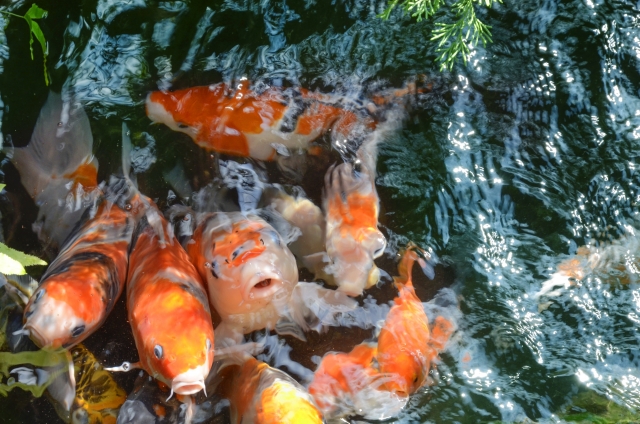In ancient Japan, a bud of literature was sprout from Waka; traditional Japanese poem of thirty-one letters. Today, I’d like to write about Hyakunin Isshu that has been cherished greatly for more than 1,000 years. The more I learn Japanese history and culture, the more I get mesmerized. I do hope my intellectual excitement and deep inner joy would reach out many people on the globe.
古代の日本において、文学の萌芽は和歌より生まれました。今日は、千年以上の時を経た現代においても愛唱されている、百人一首について書いてみたいと思います。日本の歴史や文化を学べば学ぶほど面白くなり、この私の知的興奮と深い内なる喜びが、世界中の多くの人々に伝わって行けばと心から願います。
Hyakunin Isshu English Wilipedia
百人一首 ウィキペディア
Hyakunin Isshu is officially called upon Ogura Hyakuninn Isshu. A poet named Fujiwara Teika (1162~1241) in Kamakura Era chose 100 poems from Asuka Era (592~710), Nara Era (710~794), Heian Era (794~1185), and Kamakura Era (1185~1333), 100 poems of 100 poets each and made an excellent anthology. The poets are from imperial family to begin with an emperor, aristocrats, monks, and women high-ranking officials. They wrote and expressed the beauty of the nature, secret love romance, and love for a child as a parent, all universal emotions, and love for all living things are composed.
百人一首とは、正式には小倉百人一首と言います。鎌倉時代の歌人、藤原定家(1162~1241)が、飛鳥時代(592~710)奈良時代(710~794)、平安時代(794~1185)、鎌倉時代(1185~1333)にかけての百人の歌人の和歌を一人につき一首ずつ選んで作った秀歌撰です。歌人は天皇をはじめとする皇族、貴族、僧侶、女房などで、自然の美しさや、秘密の恋や、子を思う親心などの普遍的な心情、生きとし生けるものへの大きな愛とでも言うべきものが詠まれています。
For the last few days, I was listening to Hyakunin Isshu Waka poems and the explanations on You Tube, lying on the bed while dozing off. On You Tube you can find plenty of movies and sounds regarding Hyakunin Isshu. Now it’s in mid-summer and cicadas are buzzing noisily, but the atmosphere brings me wondrous feeling that I’m connecting with poets of 1,000 years ago transcending time and space.
ここ数日、ベッドに横たわり目を閉じてうつらうつらしながら、百人一首に詠まれた和歌と、その解説をYou Tubeで聞いていました。You Tubeには百人一首に関する動画や音声が沢山上がっています。今は盛夏となり、蝉の鳴き声かまびすしき風情もまた、一千年前の歌人達と何処かで繋がっている様な気持ちを運んで来てくれて、これもまた風流です。

I’ve never read in detail about Hyakunin Isshu, so I bought this book and now learning it. As name represents Hyakunin (100 persons) Isshu (one poem), there are 100 Waka traditional Japanese poems, and I found some poems that I knew. I studied them in Japanese class in junior high school and high school. I used to love Japanese class so much and can’t help but feeling nostalgia.
これまで百人一首について書かれたものを読んだことがなかったので、この本を買って学び直しています。その名の通り百首ある和歌ですが、その中でも聞き覚えのあるものが幾つかありました。中学校や高校の国語の教科書にも載っていたものもあり、大好きだった国語の授業を思い出して、懐かしくなります。
春過ぎて
夏来にけらし
白妙の
衣干すてふ
天の香具山
(持統天皇)
Spring gone
Summer seems arrived
White Kimono are aired
At Amano Kaguyama Mountain
(Emperor Jitoh)
田子の浦に
うち出でて見れば
白妙の
富士の高嶺に
雪は降りつつ
(山部赤人)
Tagonoura
Going out to see
The Pure white
On the peak of Mt. Fuji
It’s snowing
(Yamabeno Akahito)
花の色は
うつりにけりな
いたづらに
わが身世にふる
ながめせし間に
(小野小町)
The color of
Sakura cherry blossoms
Faded away nonchalantly
And I got old
While long rain lasted
I was absentminded
(Onono Komachi)
ひさかたの
光のどけき
春の日に
しづ心なく
花の散るらむ
(紀友則)
On a spring day
Sunlight shining calmly
Sakura cherry petals
Scattering away hastily
(Kino Tomonori)
逢い見ての
のちの心に
くらぶれば
昔はものを
思はざりけり
(権中納言敦忠)
Looking back my heart
After I met you
And made love with you
Until yesterday
I hadn’t been thinking anything
(Gon Chunagon Atsutada)
The influence of Hyakunin Isshu was extraordinary. It was not just an excellent anthology, it nurtured very rich culture. Clam-matching is one of them. A game separating bivalve clams into two pieces and finding the pair was born. Writing and painting Waka poems and picture inside of the clams, and upper phrase and lower phrase of a Waka poem written separately were called poem clams (utagai). These amazingly beautiful clam-matching shells are still crafted and sold today.
百人一首は、ただの秀歌撰にとどまらず、様々な文化を育んで行きました。貝覆いや貝合わせというものもその一つで、ハマグリなどの二枚貝を二つに分けて、対をのものを探すという遊びを生んで行きました。貝の内側に和歌や絵を描き、和歌の上の句と下の句を二枚の貝に分けて書いたものを歌貝と呼びました。現在に至るまで、この世にも美しい貝合わせは制作販売されています。

As times descended and in Azuchi Momoyama Era (1573~1600), a card game Hyakunin Isshu Karuta was born and it was widely loved in Edo Era (1600~1867). A game of not taking clams but taking Washi Japanese paper cards. For the rule, first and foremost it’s necessary to memorize all the 100 poems. When upper phrases of a poem (5,7,5,7,7 letters of 5,7,5) was read, one ought to find out a card of lower phrases (7,7 letters). The elaborate culture Heian Era aristocrats loved was literally marvelous and it was enriched affluently as times descended. And it is still thriving in this day and age. Thinking of the long history, my heart gets intoxicated.
また時が下がり安土桃山時代頃(1573~1600)には、百人一首かるたという遊びも生まれ、江戸時代(1600~1867)には広く愛されました。貝ではなく、和紙に書いたものをとって楽しむ遊びです。百人一首かるたは、まず前提として百首全ての歌を暗唱しているということが必要となって来ます。そして上の句(五七五七七となる歌の初めの五七五)が読み上げられたら、下の句(五七五に続く七七の部分)を探すというもの。平安貴族が愛し、長い時を経て様々に派生しつつ受け継がれて来た誠に雅なる文化に、胸のときめきを覚えます。

A genre of literature, Tanka and Haiku originated in Waka is deeply loved and cherished in our daily life in Japan. Almost every day, you can find Haiku, Tanka, or Senryu of readers are introduced in newspapers. It is vastly and inseparably living inside of Japanese heart.
和歌を起源とする短歌や俳句は、今も日本の暮らしの中に深く息づいている文学の一つで、新聞には読者が投書した俳句や短歌や川柳が毎日の様に紹介され、日本人の心の在り方に染み込み馴染んでいるのです。
And the long tradition of Waka making in the Imperial Court in Asuka Nara Era (592~794) is passed on. Japan celebrates a royal ritual that is New Year Imperial Poetry Reading Party every January. Emperor throws the eminent ritual. Poems made and read by Imperial family are introduced on the media broadly every year, and some poems selected from the general public with honor are introduced as well. The ritual of New Year Imperial Poetry Reading Party brings the nation of Japan fresh and vibrant atmosphere. It is utterly a rejoicing and delightful event.
また、飛鳥・奈良時代に宮中で詠まれた和歌の伝統は今に伝わり、現在も宮中で天皇陛下がお催しになる歌会始の儀が毎年一月に行われるという、やんごとなき伝統を日本は誇っています。歌会始の儀で皇族の方々がお詠みになった歌は広くメディアで紹介され、一般から詠進されて選に預かった歌も紹介されます。歌会始の儀は、年の始めに日本中が清かなる空気に包まれる、いみじくも誠に喜ばしい行事です。
参考文献:「百人一首解剖図鑑」 著者 谷知子 発行所 株式会社エクスナレッジ






















